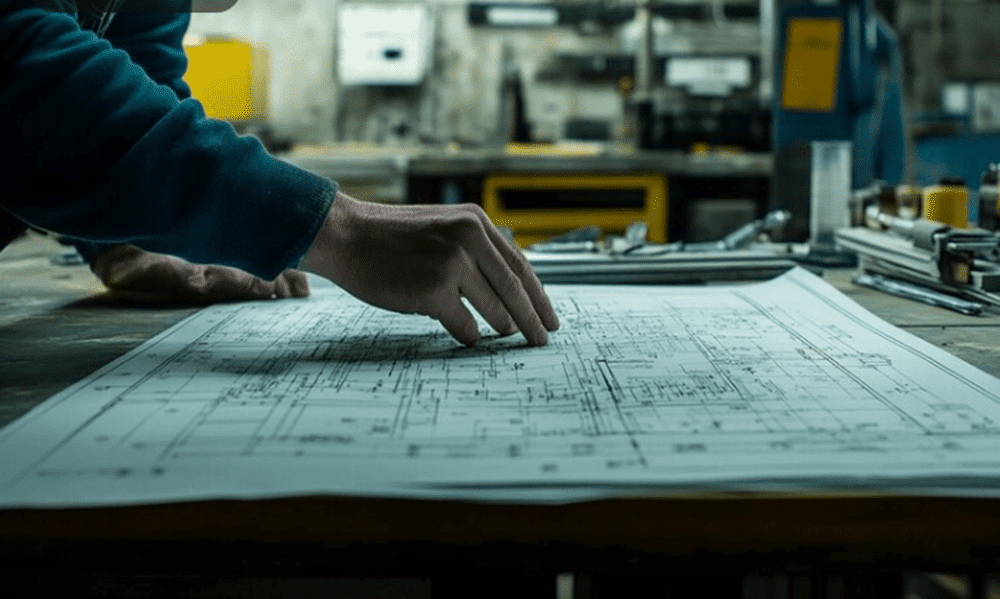Sheet metal design is a fundamental aspect of various engineering and manufacturing processes. For beginners, one of the most crucial steps in sheet metal design is understanding material selection. Choosing the right material impacts not only the functionality and durability of the final product but also the efficiency and cost of the manufacturing process. In this guide, we will explore the basics of material selection in sheet metal design and offer insights to help you make informed decisions for your projects.
What is Sheet Metal Design?
Sheet metal design involves creating detailed plans and specifications for products made from thin, flat pieces of metal. These designs are used in a variety of industries, including automotive, aerospace, electronics, and construction. The process typically involves cutting, bending, and assembling metal sheets to create components or structures. A successful sheet metal design balances aesthetics, functionality, and manufacturability.
Why Material Selection Matters
Material selection is a critical factor in sheet metal design because it influences several key aspects of the final product:
- Mechanical Properties: Different metals have varying strengths, ductility, and hardness. Selecting a material with appropriate mechanical properties ensures that the final product can withstand the required loads and stresses.
- Cost: Material costs can vary significantly. Choosing a material that meets the design requirements while staying within budget is essential for cost-effective production.
- Manufacturability: The ease with which a material can be processed affects the efficiency of the manufacturing process. Some materials are easier to cut, bend, and weld than others.
- Corrosion Resistance: Depending on the environment in which the final product will be used, selecting a material with suitable corrosion resistance is vital to ensure longevity and performance.
- Aesthetic Considerations: For products where appearance is important, material selection can affect the surface finish and overall look of the finished item.
Common Materials Used in Sheet Metal Design
Several materials are commonly used in sheet metal design, each with its unique properties and applications:
- Aluminum: Known for its lightweight and corrosion-resistant properties, aluminum is widely used in automotive and aerospace applications. It is also easy to machine and has good thermal and electrical conductivity.
- Steel: Steel is favored for its high strength and durability. It is available in various grades, including carbon steel, alloy steel, and stainless steel. Carbon steel is commonly used for structural components, while stainless steel is preferred for applications requiring corrosion resistance.
- Copper: Copper offers excellent electrical and thermal conductivity, making it suitable for electrical and electronic applications. It also has good corrosion resistance and is often used in plumbing and roofing.
- Brass: Brass is a copper-zinc alloy known for its machinability and aesthetic appeal. It is often used in decorative applications and components requiring good wear resistance.
- Titanium: Titanium is prized for its strength-to-weight ratio and corrosion resistance. It is used in high-performance applications such as aerospace and medical devices.
Factors to Consider in Material Selection
When selecting materials for sheet metal design, consider the following factors:
- Design Requirements: Determine the mechanical and environmental requirements of the final product. This includes factors like load-bearing capacity, exposure to chemicals or moisture, and temperature extremes.
- Fabrication Methods: Different materials respond differently to various fabrication methods, such as laser cutting, stamping, and welding. Ensure that the chosen material is compatible with the manufacturing processes you plan to use.
- Cost: Balance material costs with performance requirements. Sometimes, a more expensive material may offer long-term savings through enhanced durability or reduced maintenance.
- Availability: Ensure that the selected material is readily available and that suppliers can provide it in the required quantities and dimensions.
- Regulatory Requirements: In some industries, specific materials must meet regulatory standards or certifications. Verify that your material choice complies with relevant regulations.
Tips for Beginners
- Consult with Experts: If you’re new to sheet metal design, consulting with material experts or experienced engineers can provide valuable insights and help you make informed decisions.
- Perform Testing: Conduct tests or simulations to evaluate how different materials perform under real-world conditions. This can help validate your material selection and avoid potential issues.
- Stay Updated: Material technology is constantly evolving. Stay informed about new materials and advancements that could benefit your designs.
- Consider Sustainability: Evaluate the environmental impact of your material choices. Sustainable materials and processes can contribute to greener manufacturing practices.
Conclusion
Understanding material selection in sheet metal design is crucial for creating high-quality, cost-effective, and functional products. By considering factors such as mechanical properties, cost, maneuverability, and environmental conditions, you can make informed decisions that enhance your designs. Whether you are working on automotive components, electronic housings, or architectural elements, the right material choice will play a significant role in the success of your project.
For more insights and expert guidance on sheet metal design, consider exploring our sheet metal design services. Our team of professionals is here to help you achieve the best results for your projects.
